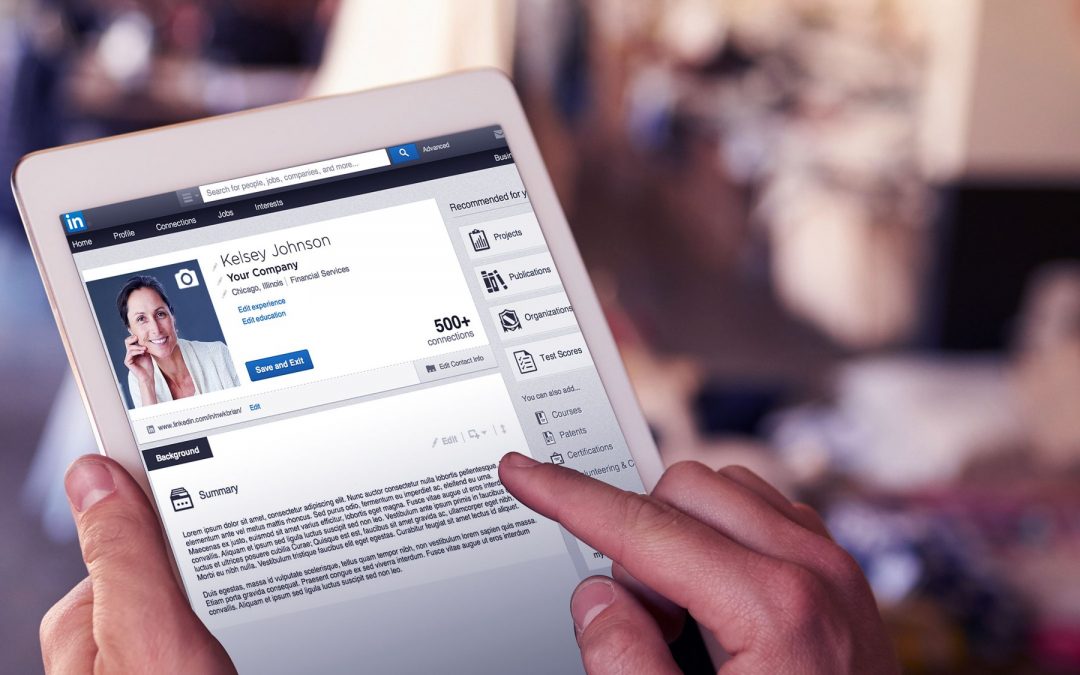Over 90% of recruiters use LinkedIn to fill open positions. If you don’t already have a LinkedIn profile, get one. Once you’ve started your profile, you’ll need to learn how to use it effectively. We’ll help you take the first steps to optimize your LinkedIn profile for your job search in the post below.
A: Complete Your LinkedIn Profile
A completed profile is the first critical step in turning your LinkedIn efforts into job search results. A completed profile includes the following:
- Photo – Choose a professional image that supports your brand. According to LinkedIn’s research, users with a profile photo get 21x more profile views.
- Headline – Three to five key terms that describe your value offering, ex. “Vice President Sales,” “Director of Operations,” or “Marketing Strategist.”
- Summary – A well-written narrative about your career, passions, and objectives.
- Experience – Include employer names, dates, and titles in your work history, but most importantly, include results and the business value you delivered. Users with up-to-date experience get 18x more profile views.
- Skills & Endorsements – List the key skills you have mastered that will lead to success in your next role. Connections can endorse you for the skills you possess, so make sure you select skills that reflect the value you offer. Not sure where to start? Check out the skills listed by connections in your target roles. Members with 5 or more skills listed are contacted 33x more by recruiters.
- Recommendations – Solicit stories from colleagues and clients that prove your value and support your brand.
- Contact Information – The goal of your LinkedIn profile is to make it easy for opportunities to connect with you, so make it easy for yourself to be found! We recommend listing at least an e-mail address and phone number. With LinkedIn’s current privacy settings, this information is only visible to those you connect with directly.
- Links to Other Profiles – Have a professional website or Twitter feed? Connect it to your LinkedIn profile to show more depth to potential employers.
B: Speak to the Market
All the elements above are essential. They will generate results if you develop your profile with your target future role in mind—but don’t just guess on what the market is looking for in those jobs. The market is already telling you what skills and experiences are needed in those roles through job postings. Do your research to optimize your LinkedIn profile for what the market wants:
- Find five to seven job postings that fit your desired next role. You can find the postings on any job board, including LinkedIn.
- When you find a good posting, copy/paste the entire text of the post into a text file or Word document. Repeat until you’ve found five to seven good posts, pasting all the posts into the same text file.
- Go to www.wordle.net and copy/paste in your text file to create a word cloud of the job posts. [Wordle works best in Firefox.]
- With your word cloud in hand, you can quickly see the terms that appear most frequently across all the job postings you’ve selected. These are the terms that recruiters and hiring managers are most likely to use when searching for candidates and evaluating your LinkedIn profile. Use these key terms to get found for the right opportunities!
C: Get Active and Be Found
Optimizing your LinkedIn profile is a science, and it takes some time to generate results. To understand how to improve your chances, it helps to be familiar with the way recruiters search for prospective candidates. Let’s start with a quick overview:
The days of stuffing your profile with keywords are over. LinkedIn’s search capabilities are more sophisticated than ever, and it’s a feature they continue to upgrade. Keywords still matter, but you need to include them in natural ways and in the proper places. So, use your word cloud to select the seven to nine most critical key words linked to your brand and desired next role, and use them in your headline, job titles, skills, and summary. But do not simply repeat the terms over and over! In fact, keyword stuffing can get you penalized in searches. LinkedIn’s search algorithms return the profiles deemed to be most relevant to the person doing the search, which is based on a number of factors beyond keywords.
Another crucially important factor in increasing your LinkedIn relevance is being active on the platform. You cannot just create your profile and then be passive. You must be actively engaged with your network and post regular updates, comments and participate in discussions. Use your activity to promote your brand by posting links to relevant articles, blog posts, events, videos, and images that might be of interest to your target audience.
While these ABC’s will get you started with optimizing your LinkedIn profile, there is a lot more to using LinkedIn to land your next job. Stay tuned for our future posts on advanced LinkedIn skills.

